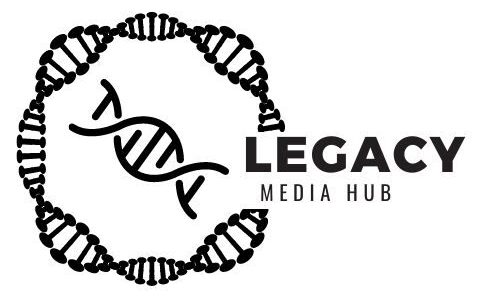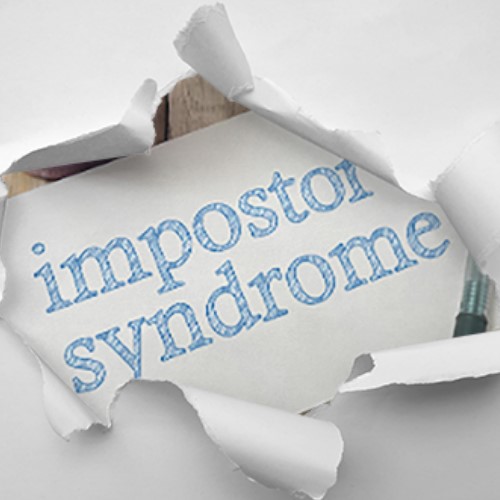This post was modified on 08/01/2022
b2b marketing has changed. b2b marketers are looking for social media listening technology and social media audience intelligence to better understand their customers’ needs and wants, what is trending in the marketplace, and which areas of the company need more resources. b2b startups and laggards would be wise to take note: b2b marketing has changed.
– b2b marketers are looking for social media listening technology and social media audience intelligence to better understand their customers’ needs and wants, what is trending in the marketplace, and which areas of the company need more resources. b2b startups would be wise to take note: b2b marketing has changed forever.
This post was originally written in 2015 after I had coached a couple of digital marketing workshops at IBM in Amsterdam and IBM in Brussels. Since then I have been studying marketing and branding in depth. The relationship between social media, expert branding and marketing has now become closer to ubiquity.
You can check out this post on social media and messaging here https://natschooler.com/social-media-and-messaging/
The focus was on the marketing customer journey and how to engage with buyers at any phase of their journey. Providing them with contextual content and leading them by the hand. Moving them through the funnel using content marketing, social media and lead nurturing methods.
It was an interesting couple of very long days and the group exercises were a lot of fun, considering there were some already established agency-client relationships and competitive software vendors fighting against the clock to deliver the last exercise of the day which was creating a campaign plan.
With so many extremely experienced marketers in one room of course many opinions about marketing B2B in software solutions, there were some great insights shared by all.
Contents
B2B Marketing Has Changed
It is key to remember that marketing in B2B has changed, from the use of telemarketing and direct mail etc. to more timely use of these classical methods to close deals during the sales process.
It’s also key to recognise that the content of the message has had to change and evolve.
With so much competition out there it is important to create a one-of-a-kind experience for your buyers through your marketing campaign. They need to see something new, different or unique about your brand compared to the rest of the players in the space.
There are certain business segments like IT for example, that don’t realise the importance of using social media audience intelligence and content marketing to build relationships. Businesses are still relying a lot on the old interruptive sales techniques and intrusive marketing methods like paid ads for example.
There will be winners and losers and data is the key
Many changes are taking place within Digital Marketing and in particular, the use of Ad-Blocking software and governmental controls are killing the effectiveness of paid ads in some instances. Many are spending money on paid ads, even though Google Analytics is reporting that they are not converting to leads. This can be very frustrating for marketers who are having to explain the ROI of certain ad campaigns.
It has now come down to data and how you’re using it. Data is key in this instance as it helps marketers to understand more about their communities and potential customers.
Social media listening and audience intelligence is key
Social media listening and audience intelligence software is key to success with paid ads and also SEO (search engine optimisation).
High-quality marketing content is absolutely crucial
According to Tim Schumacher chairman of Adblock plus – “marketers need to get creative or get lost.”
The latest figures for UK Ad Blocking:- So far 18% of British consumers are users of ad-blocking software. Nearly half of these (48%) say interference is the primary reason. Source – Internet Advertising Bureau and YouGov.
This is a serious problem for marketers who are not yet using content marketing and social media to build relationships and thought-leadership. The amount of time it will take businesses to catch up with page one search rankings could take years in some cases!
In some industries where there is a high level of competition and high-quality digital marketing skills, we will see businesses fall everywhere due to this disruption. Don’t think that mobile ads will save you! There are Ad Blockers now on Android and Apple phones too!
According to a recent marketing week article it has had over 400 million downloads and has 60 million active global users. Created by coder Michael McDonald its the “most popular browser extension tool for blocking online ads”
Tim Schumaker has a love for advertising and would rather have high-quality advertising as we all would!
“People Don’t take a publication of Vogue and rip out all of the advertising pages in anger. It just doesn’t happen because it isn’t intrusive it is great storytelling” Tim Schumaker
The jury is out on whether the ad-blocker will kill the paid ads and how fast it will occur, most certainly the more digital-savvy millennial (in mindset not age!) will kill the rubbish ads.
The first question is: Can the advertisers begin to create high-quality ads before everyone loses the will to live with nasty, badly designed pop-ups and intrusive ads?
The second question is can the internet regulate itself fast enough to not lose all the ad revenue it is generates?
Only time will tell, but my personal view is that it will grow extremely fast and there will be some companies who die along the way or…
As with any disruption if the businesses don’t move fast enough using one of the following three options then paralysis and death will set in!
- Buy the disruptor
- Hire the people
- Launch their own
So enough about the disruption taking place, this note is to really just to get execs to think deeper about the future of marketing, just remember you were warned!
Key takeaways and learnings from me
With people consuming content in any place at any time of day or night, your content is selling for you and is consumed at the pace of the buyer. There is no structured way to lead them through. Potential customers, work at their own pace and can jump over and buy at any stage and from anyone.
There is still a place for the classical methods of advertisements, telemarketing and even direct mail and publications. But these need personalization and relevance otherwise the money is just wasted.
The future of marketing is in doubt as more and more people use ad-blocking software to avoid intrusive and poorly designed ads. However, high-quality advertising can still be successful if it is personalised and relevant to the buyer.
I hope you found this article helpful, if so please share and comment and signup for my blog updates.
Image thanks to McKinsey and flickr https://www.flickr.com/photos/wilgengebroed/


Great post, Nathan.
It really highlights the problem of viewing advertising in terms of campaigns rather than a sustainable, long-term strategy. Many people find content marketing a bit confusing – they don’t get that you need to work not for transactional results now, but sustainable returns in the future. There are so many positive examples from across business sectors for how content marketing can *rescue* companies – where a focus on only traditional advertising would have sounded their deathknell.
And of course the topic of your post foregrounds the role of technology in all of this. A reminder to us marketers to stay ahead of the game as sadly for many our audiences are often still at least one step ahead of us.
Thanks Antoinette,
Always good for you to share your experience also.
Best Regards
Nat
Hi Nathaniel,
Very interesting information!
Your blog has been added to my favorites.
Well done,
regards,
Alba
Thank you very much Alba
Ad-Blocking software is killing the effectiveness of paid ads in some instances.
Yes, Google itself has launched Google contributor – Contribute a few dollars each month. See fewer ads. It’s that simple. The money you contribute helps fund the sites you visit.
https://www.google.com/contributor/welcome/
Thats interesting thanks for sharing 🙂
One question comes down to what adblockers are blocking. If they blindly stop all of them, creative ads may not matter. I can personally tell you there are sites I will never share from or return to, regardless of content quality if I’m hit with pop up ads.
While not a fan of sponsored stories and posts, many will catch my eye and get me to linger. I have even clicked on a few. Those can be done creatively enough to generate revenue without being intrusive. Given Facebook’s reach and how deep ads can be targeted even the cost per click can be significantly less.
Thanks for your comment Robert many people including me resonate with your opinion!
Hi Nat,
It was a good read!
Recently I got an update on my Firefox browser and it gave me an option of going private (stealth mode). I have started using it and as a user (not a marketer), I found it better than the normal. I do not get ads. I do not get detracted.
My perception is these ads will end up being similar to TV ads. And I agree that “There is still a place for the classical methods of advertisements, telemarketing and even direct mail and publications. But these need personalization and relevance otherwise the money is just wasted.”
And as Harshavardhan MP commented, Google will add cost to view ads free browsing. My question is why should a customer pay? Curious to know..
Regards,
Rahul
Hi Rahul,
I am glad we agree! It all depends on the business model of the website…
Certainly a valid question why should the customer pay? Well people buy ad free apps all the time!
So we will see.
Best Regards
Nat
The fuss and fear around ad blocking is a storm in a tea cup.
When Tivo came out, with it’s ad-stripping facility for recorded TV, everyone worried that TV ads would die but all it has done has increased the value of advertising space around live sport which everyone wants to watch live, not hours after the event on Tivo.
The use of ad blockers online will have a similar effect and drive up the value of in platform ads, sponsored stories (FB et al.) which are indistinguishable from platform content.
Thanks Toby for sharing your insights, glad you agree the quality will go up! 😉
So we have to get better at engaging our less socially active B2B customers I agree and have been fretting over this for some time. Perhaps, dare I say it, it harks back to the days of customer relationship management and our more traditional customers have to be engaged via face to face and other relationship marketing. Hard work and more time consuming, but I suspect the personas of these B2B buyers are more suited to the in-person route to market.
I wonder therefore, if even the threat of ad-blockers is less signficant with these customers as well? They may not even respond a great deal to paid advertising? Not sure.
Hi Gabrielle,
Yes exactly, that is why testing and checking what works is key…the next few years marketing will move on to more channels. But nothing has really changed…we still need to look at the strategy, analyse the campaigns and then tweak…7
The differences since the internet came along is we have many more channels and we can analyse everything much faster and predict ROI much more accurately…
Only time will tell thank you for taking the time to comment on my blog 😉
Best Regards
Nat